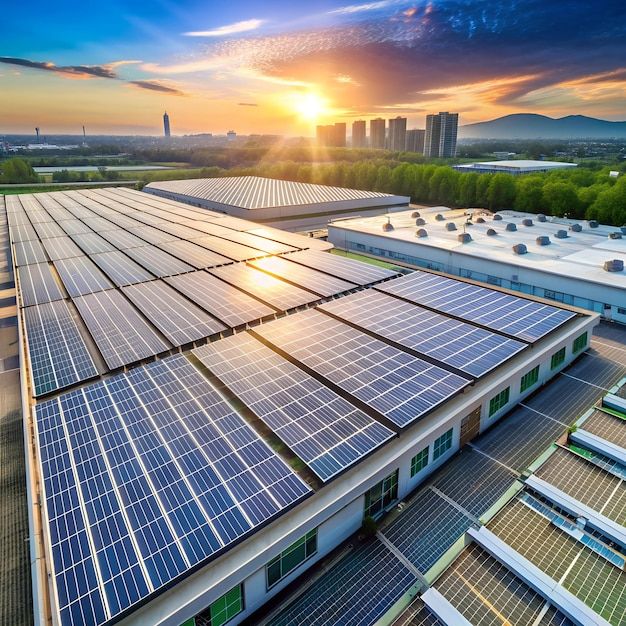When it comes to solar energy, efficiency isn’t just about panel quality—it’s also about placement. The orientation and tilt of your solar panels directly influence how much sunlight they capture throughout the year. Even small adjustments in angle or direction can make a noticeable difference in energy production. Understanding how solar angles work and how to optimize them for your location ensures you get the maximum return on your Solar Panel Installation Nottingham investment.
The Science Behind Solar Orientation
Solar panels generate electricity by converting sunlight into energy. The more sunlight that strikes the panel surface at a direct angle, the more power it produces. The Earth’s tilt and the sun’s movement across the sky cause solar intensity to vary depending on time of day, season, and geographic location. Therefore, correctly orienting panels to face the sun as directly as possible maximizes efficiency.
Best Direction for Solar Panels
In the Northern Hemisphere, solar panels perform best when facing true south because this orientation captures the most sunlight throughout the day. Conversely, in the Southern Hemisphere, panels should face true north. However, local conditions such as roof layout, shading, and electricity usage patterns may influence this decision.
For example, homeowners who use more energy in the morning might slightly orient panels toward the southeast, while those with higher evening usage might tilt them southwest. This approach balances energy generation with real-world consumption habits.
Optimal Tilt Angle Explained
The tilt—or angle at which solar panels are positioned relative to the ground—affects how sunlight strikes the panels. As a general rule, the optimal tilt angle roughly equals the latitude of your location. For instance, if you live at a latitude of 35°, setting your panels at a 35° tilt will help maximize annual energy production.
However, adjustments can further optimize performance:
-
Summer Optimization: A lower tilt (10–15° less than latitude) captures more sunlight when the sun is high in the sky.
-
Winter Optimization: A steeper tilt (10–15° more than latitude) captures more sunlight when the sun sits lower on the horizon.
-
Fixed vs. Adjustable Mounts: While fixed-tilt systems are more common and affordable, adjustable mounts allow seasonal fine-tuning for higher efficiency.
Roof Constraints and Design Considerations
Not every roof allows for perfect orientation or tilt. Flat roofs, for example, often require racking systems to create the desired angle. Similarly, east- or west-facing roofs can still support productive systems, though they typically generate 10–20% less energy than optimal south-facing installations. Modern solar design software can model different roof angles and orientations to find the best possible configuration for your property.
For homes with unconventional layouts or heavy shading, ground-mounted or pole-mounted systems may offer better flexibility. These systems can be adjusted to achieve ideal alignment and are often used in large-scale or rural installations.
Tracking Systems: Maximizing Daily Sun Exposure
For those seeking peak performance, solar tracking systems automatically adjust the angle of panels throughout the day to follow the sun’s movement. There are two main types:
-
Single-Axis Trackers: Rotate panels from east to west during the day.
-
Dual-Axis Trackers: Adjust both horizontal and vertical angles to follow seasonal and daily sun paths.
Although more expensive, tracking systems can increase energy yield by 20–40%, making them worthwhile for certain commercial or large residential installations.
The Role of Local Climate and Shading
Local weather conditions play an important role in solar orientation planning. In cloudy regions, optimizing for maximum sunlight during clear periods can improve overall annual production. Minimizing shading from trees, chimneys, and nearby buildings is also critical. Even brief or partial shading can reduce efficiency significantly, particularly for traditional string inverter systems.
Using microinverters or power optimizers can help mitigate the effects of uneven shading, ensuring each panel performs independently at its best.
Professional Assessment and Design Tools
Before installation, professionals use solar modeling tools and site assessments to determine the optimal orientation and tilt for your property. These tools consider historical sunlight data, roof geometry, and obstructions. A detailed design ensures that your system captures as much sunlight as possible while maintaining structural and aesthetic balance.
Conclusion
Maximizing solar performance isn’t just about investing in high-quality panels—it’s about positioning them correctly. By optimizing orientation and tilt based on your location, roof type, and energy needs, you can significantly improve system output and long-term savings. Whether you’re installing a new solar array or refining an existing setup, taking the time to get the solar angle right ensures that every ray of sunlight counts. A well-oriented solar system doesn’t just power your home—it powers smarter, more efficient living for years to come.


